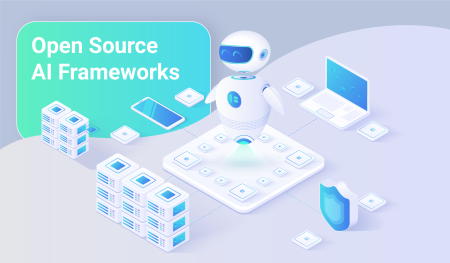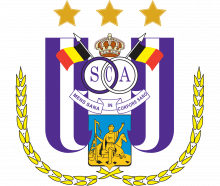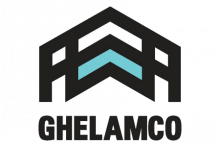
Open Source AI: What Works, What’s Trending, and How TurboStack Gives You an Edge
In today’s AI landscape, innovation is no longer reserved for the tech giants. Thanks to powerful open source frameworks and models, the playing field has opened up. And companies with the right infrastructure – like those built on TurboStack – can now compete at a high level without compromising on performance, flexibility, or control.

Which Open Source AI Frameworks Are Popular – and When Should You Use Them?
Here’s a breakdown of the most relevant frameworks, categorized by their ideal use cases:
Natural Language Processing (NLP) & Chatbots
Hugging Face Transformers
- Best for: text generation, sentiment analysis, chatbots.
- Offers access to pre-trained LLMs like BERT, GPT2, Mistral.
- A leading ecosystem for community-driven AI development.
- Compatible with both PyTorch and TensorFlow.
RAG Frameworks (e.g., LangChain, LlamaIndex)
- Best for: question-answer systems based on your own data (Retrieval Augmented Generation).
- Easily integrates with vector databases like FAISS or ChromaDB.
- Great for building custom AI assistants or internal knowledge agents.
Computer Vision
TensorFlow / PyTorch + OpenCV
- Best for: OCR, object detection, medical image processing.
- GPU-accelerated and widely supported in production environments.
- The go-to stack for enterprise vision projects.
YOLOv8 (Ultralytics)
- Best for: real-time object detection.
- Lightweight and highly performant, ideal for edge devices and cloud VPS environments.
Predictive Modeling & Tabular Data
Scikit-learn
- Best for: traditional ML tasks like regression and classification.
- Lightweight, easy to implement – perfect for quick MVPs and internal tools.
XGBoost / LightGBM
- Best for: high-performance modeling with structured data.
- Frequently used for churn prediction, fraud detection, risk scoring.
- Dominant in data science competitions like Kaggle.
Low-Code & Visuele AI-ontwikkeling
Langflow
- Drag-and-drop builder for LLM workflows.
- Great for teams with limited AI expertise.
- Integrates easily with APIs, models, and external data sources.
Gradio / Streamlit
- Perfect for building interactive demos or lightweight AI dashboards.
- Ideal for prototyping or internal-facing SaaS tools.
Ask for our TurboStack AI options.
Where Hosted Power Sees the Future of AI
We see three strategic directions emerging:
1. Privacy-first, decentralized AI
More businesses want to run models locally, without sending sensitive prompts or data to the cloud. We support hosting open source LLMs on dedicated environments, with strict separation of data.
2. GPU-based performance at scale: TurboStack
TurboStack allows for on-demand GPU provisioning in containers or VMs. Clients only pay for what they need.
3. AI-as-a-component in DevOps workflows
Whether it’s code generation, smart testing, or data cleaning, AI should be integrated directly into CI/CD pipelines. TurboStack enables this with seamless automation and environment management.
Why TurboStack Is a Unique Foundation for AI Hosting
TurboStack is built to combine scale, speed, and independence. When it comes to AI workloads, this translates into:
- Fast provisioning of AI-ready nodes, including GPU support.
- Automated updates, rollback support, and environment isolation.
- Deep GitLab and CI/CD integration for model training and inference workflows.
- Secure, tenant-separated infrastructure for data privacy and compliance.
Conclusion: Open Source AI + TurboStack = Future-Proof Flexibility
The AI revolution is real, but you don’t have to depend on OpenAI or hyperscalers. With the right tools and infrastructure, you can build powerful AI services that are open, flexible, and privacy-compliant.
Whether you're hosting NLP models, building AI agents on your internal data, or training prediction models on structured datasets – TurboStack gives you the performance and independence you need to do it right.
Curious about our solutions?
Ready to deploy your first AI workload or test an open source LLM with GPU acceleration?


















